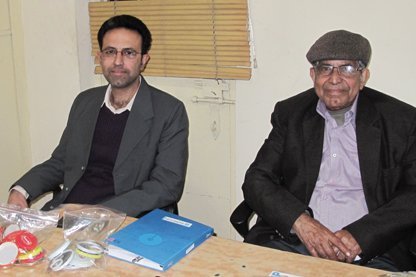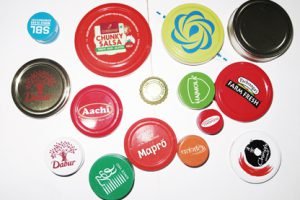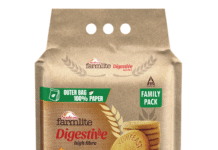
Continental Caps & Closures is one of the few businesses in the metal caps and closures segment that has been growing steadily ever since it was founded by GM Chandnani, a mechanical engineer, who quit a cosy job in an MNC to start his own SME for producing metal caps. Continental Caps & Closures has been in operation for over 38 years now and through much of this period stood against tough competition from the growing popularity of PET. Packaging South Asia caught up with GM Chandnani and his son Sundeep Chandnani
at their Okhla factory for some interesting insights about the metal caps and closures market.
Steady growth despite unfavorable market
Continental Crowns & Closures operates out of six production units in Okhla Industrial Estate, which indicates good growth and progress. The Chandnanis informed that they would soon shift to a new 14,000 sq. ft premise in Faridabad, which will help them integrate all six units under a single roof with room to spare. They said that it has become difficult to function optimally from six different units at Okhla, especially now when the business is growing at over 20% annually.
This performance is considered healthy, especially in a market that shrunk considerably after the arrival of PET bottles and containers that use plastic caps and closures. The Chandnanis attribute this growth to their long presence in the market wherein they did not compromise with quality in order to compete with the plastic caps and closures. They knew their limitations in this respect—since their clientele are from companies that use glass and metal packages, they simply focused on consistent quality and timely delivery.

Product range and impressive clientele
As the food processing, oil and chemical, liquor, beverages and pharmaceutical markets grew, it created latent opportunities for metal and glass packaging to also grow despite the overwhelming preference for PET bottles and containers among manufacturers. In this scenario, all that Continental Crowns & Closures had to do was adjust to higher demand. They had to make capital investments in expanding capacity that eventually grew to six separate units, but even this capacity is now falling short.
Continental Crowns & Closures makes a variety of caps and closures for its clients across the food processing, oil and chemical, liquor and beverages and pharmaceutical sectors. These include slip caps, twist off lug caps, printed crown caps, drum cap seals (both plain and printed), aluminum ROPP (roll on pilfer proof) caps, continuous thread (CT) caps and slip caps among others. They have been supplying to various companies like Glaxo Smith Kline, Indian Oil, Dabur, Haldiram’s, Patanjali and many others. GM Chandnani informed that his company was the first to produce long neck dome-shaped liquor bottle caps in India, which they supplied to Shaw Wallace.
Large part of growth linked to glass packaging industry
The Chandnanis feel that the growth of the glass industry is very closely connected to growth prospects in the caps and closures industry although stable growth in the metal-based packaging industry has been helpful in the long run. They feel that the present-day sensitivity towards food safety and longer shelf-life of products is an opportunity for glass to make a strong comeback and regain some lost market space. Although it cannot eat into the PET and plastic container market, today’s scale will ensure enough space for the market to grow.
The reason he cited for glass packaging losing market space to PET was high probability of damage during handling and transit. “These are the main reasons why food processing and pharmaceutical manufacturers moved away from glass. The other reason is poor response of the glass industry to the threats posed by PET and poor follow-up of opportunities in a fast-growing market,” said GM Chandnani. Also, improved logistics and better material handling technology has tackled the breakage problem in glass packaging to a large extent. They are positive about the return of glass packaging given that it is already happening in the west, from where the trends emerge.
The glass packaging industry in India was valued at around Rs. 4,000 crore in 2014 wherein the Indian made Foreign Liquor (IMFL) segment accounted for 70% of the market. Evidently, the massive and fast-growing food processing sector uses very little glass packaging but that is likely to change in the future with food safety and longer shelf life of products becoming a major issue. The combined caps and closures industry in India was valued at Rs. 1,200 crores in 2014 in which the share of the metal caps and closures segment has eroded to about 35%. Continental Caps & Closures has bucked the trend so far and is looking forward to better times.










